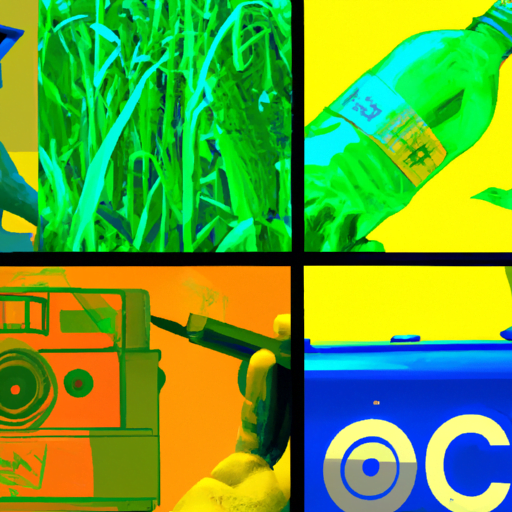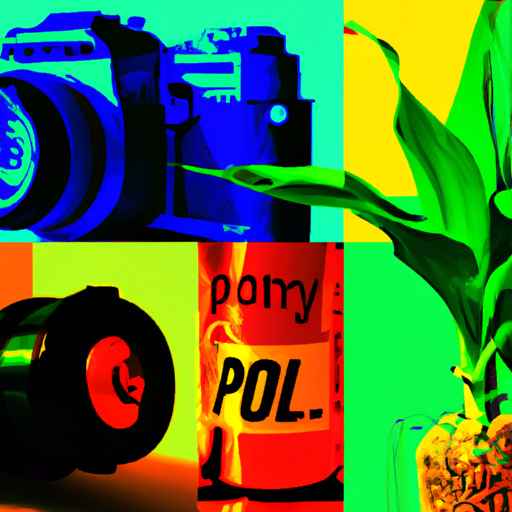
-
Table of Contents
- Environmental Sustainability in Graphic Design
- The Environmental Impact of Graphic Design
- The Benefits of Environmental Sustainability in Graphic Design
- Strategies for Environmental Sustainability in Graphic Design
- 1. Embrace Digital Design
- 2. Use Sustainable Materials
- 3. Minimize Energy Consumption
- 4. Reduce Waste
- 5. Educate Clients
- Case Studies: Leading the Way in Sustainable Graphic Design
- 1. Pearlfisher
- 2. Futerra
- Conclusion
Environmental Sustainability in Graphic Design

Graphic design plays a significant role in shaping our visual culture, but it also has a significant impact on the environment. From the production of printed materials to the energy consumption of digital design processes, graphic design has the potential to contribute to environmental degradation. However, there is a growing movement within the industry to promote environmental sustainability and reduce its ecological footprint. This article explores the importance of environmental sustainability in graphic design and provides insights into how designers can adopt more sustainable practices.
The Environmental Impact of Graphic Design
Graphic design encompasses a wide range of activities, including print production, packaging design, web design, and advertising. Each of these areas has its own unique environmental impact. Here are some key aspects of graphic design that contribute to environmental degradation:
- Printing: The production of printed materials, such as brochures, flyers, and business cards, requires large amounts of paper and ink. According to the Environmental Paper Network, the paper industry is the fourth largest industrial emitter of greenhouse gases globally. Additionally, the use of toxic inks and chemicals in printing can contaminate water sources and harm ecosystems.
- Energy Consumption: Digital design processes, including the use of computers and software, consume a significant amount of energy. The electricity required to power these devices contributes to carbon emissions and the depletion of natural resources.
- Waste Generation: Graphic design produces a substantial amount of waste, including discarded drafts, outdated promotional materials, and packaging. Improper disposal of these materials can lead to pollution and contribute to landfill overcrowding.
The Benefits of Environmental Sustainability in Graphic Design
Adopting environmentally sustainable practices in graphic design not only helps protect the planet but also offers several benefits to designers and their clients. Here are some key advantages of incorporating environmental sustainability into graphic design:
- Cost Savings: By reducing paper and energy consumption, designers can save money on production and operational costs. For example, designing for digital platforms eliminates the need for printing and shipping, resulting in significant cost savings.
- Enhanced Reputation: Clients and consumers are increasingly concerned about environmental issues. By demonstrating a commitment to sustainability, graphic designers can enhance their reputation and attract environmentally conscious clients.
- Increased Efficiency: Adopting sustainable design practices often involves streamlining processes and eliminating unnecessary waste. This can lead to increased efficiency and productivity, allowing designers to focus on creating high-quality work.
- Improved Client Relationships: Many clients now prioritize sustainability and expect their partners to share their values. By incorporating environmental sustainability into their design processes, designers can build stronger relationships with clients and differentiate themselves from competitors.
Strategies for Environmental Sustainability in Graphic Design
There are several strategies that graphic designers can employ to reduce their environmental impact and promote sustainability. Here are some key approaches:
1. Embrace Digital Design
One of the most effective ways to reduce the environmental impact of graphic design is to embrace digital platforms. By designing for digital media, designers can eliminate the need for printing and reduce paper waste. Additionally, digital design allows for easy updates and revisions, reducing the need for reprints and minimizing waste.
2. Use Sustainable Materials
When printing is necessary, designers should opt for sustainable materials. Recycled paper and vegetable-based inks are excellent alternatives to traditional paper and toxic inks. These materials have a lower environmental impact and can be recycled or composted after use.
3. Minimize Energy Consumption
Designers can reduce their energy consumption by adopting energy-efficient practices. This includes turning off computers and other devices when not in use, using energy-saving settings, and investing in energy-efficient equipment. Additionally, designers can consider using renewable energy sources to power their design processes.
4. Reduce Waste
Designers should strive to minimize waste throughout the design process. This can be achieved by carefully planning projects, avoiding overproduction, and reusing or repurposing materials whenever possible. Additionally, designers should prioritize recycling and proper disposal of waste materials.
5. Educate Clients
Graphic designers have a unique opportunity to educate their clients about the importance of environmental sustainability. By explaining the benefits of sustainable design practices and offering eco-friendly alternatives, designers can encourage clients to make more environmentally conscious choices.
Case Studies: Leading the Way in Sustainable Graphic Design
Several design agencies and individual designers have already embraced environmental sustainability and are leading the way in sustainable graphic design. Here are two inspiring case studies:
1. Pearlfisher
Pearlfisher, a global design agency, has made sustainability a core part of its business strategy. The agency has developed a comprehensive sustainability framework that guides its design processes and decision-making. Pearlfisher focuses on reducing waste, using sustainable materials, and collaborating with environmentally conscious clients. The agency’s commitment to sustainability has not only attracted like-minded clients but also resulted in numerous awards and recognition.
2. Futerra
Futerra, a sustainability consultancy and creative agency, specializes in helping brands communicate their sustainability efforts effectively. The agency uses design as a tool to inspire positive change and promote sustainable behaviors. Futerra’s work includes designing impactful campaigns, creating sustainable packaging solutions, and developing educational materials. The agency’s innovative approach to sustainable graphic design has earned it a reputation as a leader in the field.
Conclusion
Environmental sustainability is a pressing issue that requires the collective effort of individuals and industries worldwide. Graphic design, as a powerful communication tool, has the potential to drive positive change and promote sustainable practices. By embracing digital design, using sustainable materials, minimizing energy consumption, reducing waste, and educating clients, graphic designers can significantly reduce their environmental impact. The benefits of environmental sustainability in graphic design extend beyond protecting the planet; they include cost savings, enhanced reputation, increased efficiency, and improved client relationships. As the industry continues to evolve, it is crucial for designers to prioritize sustainability and contribute to a more environmentally conscious future.
